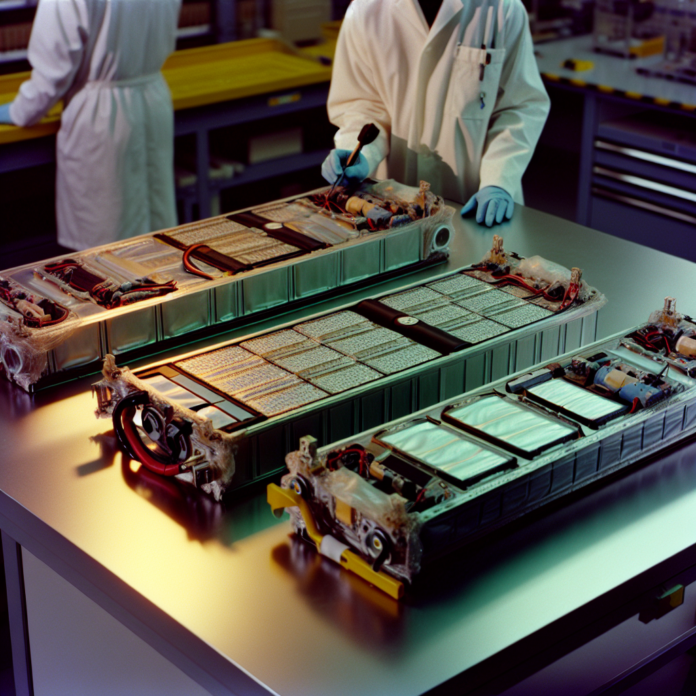“`html
Tesla vs BYD Battery Showdown: Which One Comes Out on Top?
The electric vehicle (EV) revolution is in full swing, and two companies stand out in the race to develop the best battery technology: Tesla and BYD. Both automakers utilize cutting-edge battery designs, but a recent teardown analysis aimed to determine which brand holds the edge. Let’s dive into the findings and see how Tesla and BYD stack up against each other.
Understanding Tesla and BYD’s Battery Technologies
Batteries are the heart of any EV, dictating performance, range, and charging speed. While Tesla has long been a dominant player in the market, BYD is quickly gaining ground, thanks to its advancements in battery manufacturing and efficiency.
Tesla’s Battery Technology
Tesla primarily relies on two types of battery cells:
- 2170 Cells – Used in the Model 3 and Model Y, these cylindrical lithium-ion cells provide a balance between energy density and efficiency.
- 4680 Cells – Tesla’s latest innovation, designed to offer increased energy density, better thermal management, and improved structural integration.
Additionally, Tesla works with various suppliers like Panasonic, LG Energy Solution, and CATL to enhance battery performance.
BYD’s Battery Technology
BYD, a pioneer in battery manufacturing, has developed its own proprietary battery known as the Blade Battery. This lithium iron phosphate (LFP) battery boasts several advantages:
- Enhanced Safety – The Blade Battery is designed to resist thermal runaway, making it one of the safest batteries in the EV market.
- Longer Lifespan – LFP chemistry ensures a long cycle life, allowing cars to be driven for hundreds of thousands of miles with minimal degradation.
- Cost Efficiency – Since it avoids expensive materials like nickel and cobalt, BYD’s battery is more affordable to produce.
The Battery Teardown: Side-by-Side Comparison
Researchers recently conducted a detailed teardown of Tesla and BYD’s battery packs to evaluate key performance metrics such as energy density, efficiency, charging speed, and longevity.
Energy Density
One of the most crucial factors in EV batteries is how much energy they can store per unit of volume. The teardown revealed:
- Tesla – The 4680 cell displays a high energy density, allowing for greater range and faster acceleration.
- BYD – While the Blade Battery excels in safety and longevity, its energy density is lower compared to Tesla’s nickel-based cells.
In terms of maximizing range, Tesla’s battery has an advantage. However, energy density isn’t the only determining factor when evaluating a battery’s overall efficiency.
Battery Safety
Safety remains a top priority in EV development, and the teardown showed notable differences between the two brands:
- BYD’s Blade Battery demonstrated superior resistance to thermal runaway, meaning it is far less likely to catch fire under extreme conditions.
- Tesla’s Cells, particularly the new 4680 format, have improved thermal management but still rely on cooling mechanisms to prevent overheating.
If safety and thermal stability are top concerns, BYD takes the lead in this category.
Charging Speed and Efficiency
Fast charging is critical to reducing downtime for EV drivers. In the battery showdown:
- Tesla – The new 4680 cells support higher charging rates and are designed for improved efficiency during fast charging.
- BYD – The Blade Battery offers strong charging capabilities but remains slightly slower compared to Tesla’s advanced cell chemistry.
For consumers who prioritize fast charging and efficiency, Tesla holds the advantage.
Battery Longevity and Degradation
Battery degradation affects performance over time, impacting range and efficiency. The findings reinforced:
- BYD – The LFP-based Blade Battery demonstrated exceptional longevity, losing minimal capacity even after extensive use.
- Tesla – While Tesla’s batteries also offer impressive lifespan, they tend to degrade slightly faster due to more complex nickel-based chemistries.
For those seeking a long-lasting battery with minimal degradation, BYD provides a compelling option.
Which Battery is Superior?
Determining the superior battery depends on what consumers prioritize the most. Here’s a breakdown of the strengths of each manufacturer:
- Choose Tesla if you prioritize higher energy density, faster charging speeds, and longer range per charge.
- Choose BYD if safety, cost-effectiveness, and long-term battery longevity are your main concerns.
Final Thoughts
Both Tesla and BYD are pushing the boundaries of battery innovation, each with its own set of advantages. While Tesla’s high energy density and rapid charging make it ideal for long-range EVs, BYD’s Blade Battery offers unmatched safety and longevity. Depending on your needs as an EV buyer, either option could be a great fit for the future of electric transportation.
As the EV industry continues evolving, it’s clear that battery advancements will play a key role in shaping the cars of tomorrow. Whether you side with Tesla or BYD, one thing is certain—both companies are driving the future of sustainable mobility.
“`


